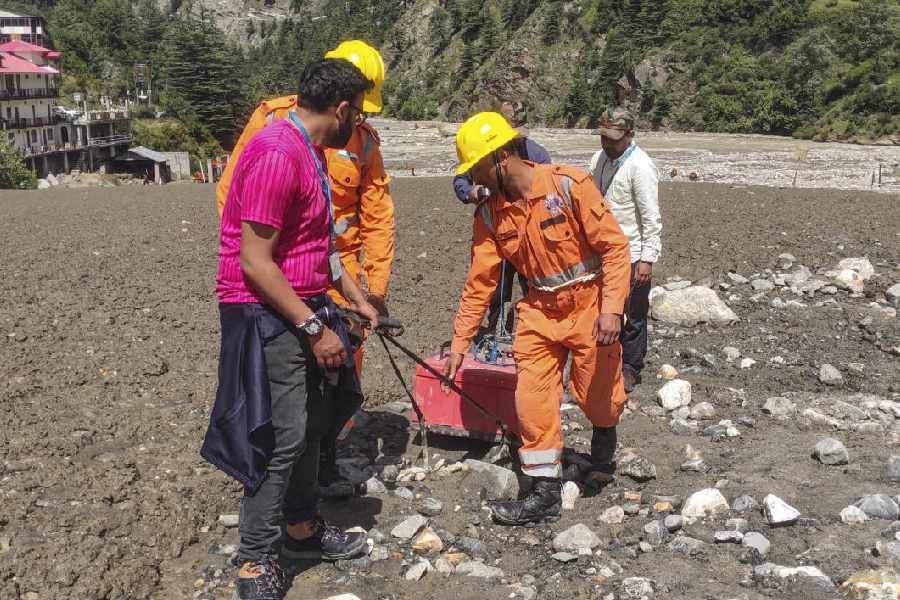 |
Siddhartha Singh, 31, a software consultant working with a leading multinational, had just returned from an official trip to the US. He?d flown nine hours from Seattle to Amsterdam, from where he had taken the connecting flight back to his base, Bangalore, flying close to another 10 hours. Landing back in India, he felt the usual after-effects of jet lag ? sleepiness, irritability, inability to concentrate. He also felt a bit achy ? and there was an unusual pain in the calf region of his left leg. Putting this down to sitting in a cramped economy class seat for almost 10 hours at a stretch, Singh went about his usual business.
Unknown to Singh, and he would have scoffed if any one had told him this, his life was at grave risk. He was a victim of what is sometimes jokingly referred to as the ?economy class syndrome? or in medical terms, deep vein thrombosis (DVT). Due to restricted movement on his flight, a clot had formed in a deep vein in Singh?s left leg ? and there were chances this clot would travel up this vein and reach his heart, brain or lungs, causing severe haemorrhaging and potentially, even death.
Luckily for Singh, he happened to mention his pain to a colleague who was aware of this condition. He insisted on Singh going to a doctor, who eventually found that there was a clot. Removing it was a simple matter of injecting the patient with anti-coagulants (blood thinners) to dissolve the clot, but neglecting it could have been disastrous.
Any long period of inaction, especially of the lower limbs, can cause deep vein thrombosis. But in today?s busy world, the only time people get to spend long hours doing nothing (except dozing in their seats) are on long international flights. The dangers are increased by the fact that sometimes, a person suffering from this may not even be aware of the situation. ?The pain is sometimes minor, and one may put it down to a muscle strain or bruise. And the most dangerous thing is the clot may reach your heart or brain as long as two weeks after being formed,? says Dr Pam Saldanha who has seen quite a few cases of deep vein thrombosis affecting software workers from tech city Bangalore who frequently fly long hours. ?People travelling long hours by road, whether by car or in a coach or bus, are equally at risk. But at least, cars and buses stop once in a while to let travellers stretch their legs. In a flight, that, obviously, is not an option,? says Dr Saldanha.
Flights over six hours long are the most risky. And notwithstanding the ?economy class? nomenclature, those who travel first or business class are almost as much at risk, even though better seats and more leg room makes them more comfortable on a flight than the economy class traveller.
Research has shown that some people are in the high-risk category for developing DVT ? smokers, pregnant women, elderly or overweight travellers, women taking oral contraceptives, individuals who?ve undergone recent surgery, as well as those with existing medical conditions like diabetes or hypertension.
The prevention? Some doctors advise taking an aspirin just before the flight ? aspirin is a mild anti-coagulant. But the basic advice everybody has to give is ? keep moving. No matter how tough this seems at times in a long flight, weaving your way through food trolleys, irate airhostesses and screaming kids, walking around once every hour is a must. In-flight entertainment these days might be quite engrossing, so take a walk in between the five films you may end up watching.
Also, drink lots of water. This has a very marginal effect on ?thinning the blood?, but prevents dehydration which may aid clot formation. Drinking loads of water will also mean you?ll have to get up more frequently to use the loo, so more exercise. The atmosphere in a plane tends to dehydrate you anyway, so drinking water is key, and one theory suggests it may also reduce jet lag.
As the atmosphere inside an airplane is slightly low on moisture, some amount of dehydration is common on long flights. Having too much alcohol, tea and coffee will increase dehydration.
While sitting, don?t cross your legs as this inhibits blood flow. Also, do some exercises while seated every half an hour or so such as rotating your ankles, lifting your legs up and down and bending down to touch your legs once in a while.
Do not wear tight, restrictive clothing as this will only add to your discomfort. You should be especially careful about your choice of footwear ? stiff formal shoes and tight socks increase the risk of clotting. If possible, take your shoes off during the flight and wear old cotton socks with loose elastic bands.
Given that lengthy air travel is becoming more common in today?s globalised world, plus the fact that there are now more direct flights (without stopovers, necessitating flying for close to 20 hours at a stretch) connecting continents than ever before, the flying time you clock in is definitely going to increase.
So no matter how tempting it is to drink yourself into a stupor and just sleep through your flight, remember it can cause worse side effects than a hangover when you get down.










